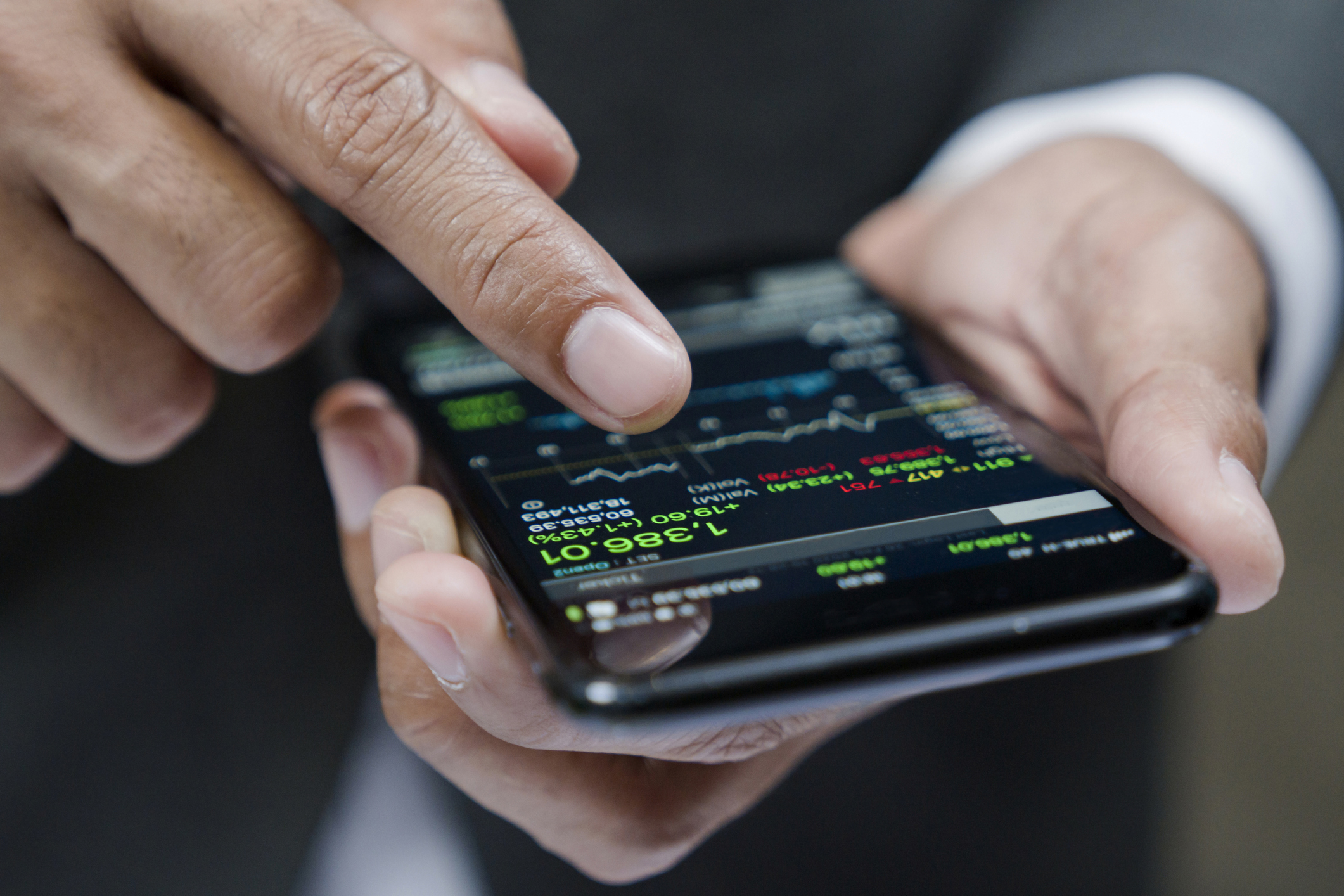A very basic guide to valuing individual companies
If you’re tempted to pick stocks for yourself, you’ll have to learn how to value companies. Here, John Stepek outlines a very rough guide to the things you'll need to consider.


Editor’s note: John’s away this week so today we have an excerpt from his book on contrarian investing, The Sceptical Investor.
If you want to invest in shares based on fundamentals rather than chart analysis, then at some point you’re going to have to learn how to value companies.
This isn’t easy. You’ll have to learn to read a set of accounts at the very least. And even then, picking winners rather than losers is by no means certain. This is why lots of investors prefer to hand over the work to a fund manager, or simply buy an index fund.
MoneyWeek
Subscribe to MoneyWeek today and get your first six magazine issues absolutely FREE

Sign up to Money Morning
Don't miss the latest investment and personal finances news, market analysis, plus money-saving tips with our free twice-daily newsletter
Don't miss the latest investment and personal finances news, market analysis, plus money-saving tips with our free twice-daily newsletter
But if you’re tempted to have a go at picking stocks for yourself, here’s a very rough guide as to the things you’re going to have to consider.
What to think about when analysing companies
Before you invest in a company, you have to know whether the price you’re being asked to pay is a good deal or a bad deal. That means you need to have an opinion on what the business is actually worth.
And ultimately, to have any idea of what a business is worth, you need to answer three questions.
1) How does the business make money?
This often seems like a simple question to answer. But even in businesses that are apparently relatively straightforward, it isn’t always.
Take the magazine and newspaper publishing business. If you see publishing as primarily a business that makes money by sourcing eyeballs and delivering them to advertisers, then the product is the audience, and the customer is the advertiser.
If you see publishing as primarily a business that makes money by sourcing information and delivering it to readers, then the product is the information, and the customer is the reader.
Either model can be made to work, and most publishers are a mixture of both. But the challenges involved in each are very different and the key metrics required to measure success are going to be different too.
This is where your “circle of competence” – a concept popularised by Warren Bufftt and Charlie Munger – comes into play. Your circle of competence – in this context – represents types of businesses that you are familiar with and understand better than most people.
As Buffett put it in his 1996 letter to shareholders: “What an investor needs is the ability to correctly evaluate selected businesses. Note that word ‘selected’: You don’t have to be an expert on every company, or even many. You only have to be able to evaluate companies within your circle of competence.”
The key, as Buffett puts it, is to understand the difference between what you know, and what you merely think you know. “The size of that circle is not very important; knowing its boundaries, however, is vital.” Investors typically come unstuck when they think they know something that then turns out to be false.
This is where beginner investors often get confused. They may have heard Peter Lynch (the extraordinarily successful Fidelity fund manager, and author of One Up on Wall Street) talk about buying “what you know”.
Lynch is not talking about investing in M&S because you like prawn sandwiches and reasonably durable underwear. But if you happen to work for an underwear manufacturer or a sandwich shop that supplies M&S, or you work in logistics and have a deeper understanding of supply chain issues, then that might give you an edge in figuring out what the intrinsic value of M&S should be, for example.
Nor does it mean that you should invest directly in your employer because you understand them better than any other company. For a start, that’s way too much concentration risk (you don’t want to have both your savings and your income being dependent on the health of a single company).
Secondly, there’s a real danger of falling outside the boundaries of your circle of competence – you probably think you know more than you really do about the company that employs you.
Also, you need to have some sector diversification, because you don’t want to have all of your eggs in one industry basket. So, ideally, you want your circle of competence to cover a number of areas – which is not as hard as it might look, given the range of interests and career experience each of us builds over time.
B) Is the business any good at what it does?
If a company is good at what it does, then it should be able to generate consistent growth while remaining profitable.
While there are many measures you can look at – each sector will have its own key metrics, which is where your circle of competence comes in – one useful measure is to look at “return on capital employed” (ROCE).
ROCE looks at a company’s trading profit as a percentage of the money invested in the business. In other words, it shows how good a company is at turning money that’s been invested in it into profits.
ROCE can help to separate quality companies with sustainable growth from those that are dependent on factors such as acquisitions or financial engineering to flatter earnings and sales figures.
As my former colleague and experienced analyst Phil Oakley often points out, ROCE is almost like an interest rate on a savings account – it shows you how hard your money is working, and it also compounds over time, which is crucial to generating market-beating returns in the long run.
You should compare ROCE against the sector average, and the wider market as a whole. But more importantly, you should compare it across time. Look at the company’s history – you want to see a consistent or growing ROCE over time, so that the compounding effect gets to work for you.
C) Can the business keep it up?
The problem with being a profitable business is that everyone ends up wanting a piece of the action. This is at the heart of how free market capitalism works (in theory). Entrepreneurs spot an opportunity to make money; one of them cracks it, and makes a lot of money. Other entrepreneurs notice that someone else has discovered a honey pot, and they all swarm over. Eventually, only the most efficient operators survive. As a result, they make just enough profit, while consumers and the wider economy benefit from scarce resources being used efficiently.
This is – perhaps counter-intuitively, as the ongoing appeal of centralised systems demonstrates – a good way to manage and distribute resources. But it’s a pretty brutal environment in which to make a living. So if you’re a shareholder, you want the company to be able to maintain its lead on the competition for as long as possible.
As Buffett put it in 2011: “The single most important decision in evaluating a business is pricing power. If you’ve got the power to raise prices without losing business to a competitor, you’ve got a very good business. And if you have to have a prayer session before raising the price 10%, then you’ve got a terrible business.”
The advantages that make pricing power possible are collectively known as an “economic moat”. Given that profit margins are generally competed away over time, a consistently high ROCE and stable margins are good quantitative signals that a company has a decent moat.
In terms of qualitative judgements, you need to understand what that moat consists of, and whether or not it is sustainable. For example, a company may have a powerful brand (such as Coca-Cola or Apple). Or it might own a lot of patents. Or it might be protected from competition by a wall of regulation (tobacco companies being the most obvious example).
Equally, a company’s dominance might be threatened with political intervention if it becomes too obviously powerful within its niche – social media giant Facebook is one example. Put simply, what is the company’s competitive advantage, and will it last?
• For more on this topic, and many others to do with contrarian investing, you can grab a copy of John’s book here.
Get the latest financial news, insights and expert analysis from our award-winning MoneyWeek team, to help you understand what really matters when it comes to your finances.
John Stepek is a senior reporter at Bloomberg News and a former editor of MoneyWeek magazine. He graduated from Strathclyde University with a degree in psychology in 1996 and has always been fascinated by the gap between the way the market works in theory and the way it works in practice, and by how our deep-rooted instincts work against our best interests as investors.
He started out in journalism by writing articles about the specific business challenges facing family firms. In 2003, he took a job on the finance desk of Teletext, where he spent two years covering the markets and breaking financial news.
His work has been published in Families in Business, Shares magazine, Spear's Magazine, The Sunday Times, and The Spectator among others. He has also appeared as an expert commentator on BBC Radio 4's Today programme, BBC Radio Scotland, Newsnight, Daily Politics and Bloomberg. His first book, on contrarian investing, The Sceptical Investor, was released in March 2019. You can follow John on Twitter at @john_stepek.
-
 UK blue chips offer investors reliable income and growth
UK blue chips offer investors reliable income and growthOpinion Ben Russon, portfolio manager and co-head UK equities, ClearBridge Investments, highlights three British blue chips where he'd put his money
-
 Rightmove: Asking prices set to rise 2% in 2026 after post-Budget market rebound
Rightmove: Asking prices set to rise 2% in 2026 after post-Budget market reboundBuyers and sellers who held off in anticipation of the Budget will come back to the market and contribute to asking prices increasing next year, according to Rightmove
-
 The outlook for stocks is improving
The outlook for stocks is improvingThis is the best of times for investors, says Max King. Global risks are receding, but few have noticed.
-
 The building blocks for an income strategy: resilience, growth and diversification
The building blocks for an income strategy: resilience, growth and diversificationAdvertisement Feature Iain Pyle, Investment Manager, Shires Income plc
-
 Investment platforms: how to avoid sub 2% interest rates on cash holdings and secure a better deal
Investment platforms: how to avoid sub 2% interest rates on cash holdings and secure a better dealDo you know how much interest the cash balance in your investment portfolio, ISA or Sipp earns? We lift the lid on the best and worst interest-payers – and explain what you can do about it
-
 Rethinking ESG investing
Rethinking ESG investingAnalysis Sustainable ESG funds are coming under attack for a lack of focus. Investors need to be selective
-
 Can a woman deliver you better returns?
Can a woman deliver you better returns?Tips Women often make better stock pickers than men, delivering stronger returns for investors - but with fewer females managing funds, how can you make sure you take advantage of the feminist touch when picking funds? Kalpana Fitzpatrick on how to filter funds run by women and why it matters.
-
 Flat fees vs percentage fees - are you paying too much for your investments?
Flat fees vs percentage fees - are you paying too much for your investments?Analysis We investigate whether it’s better to choose an investment platform with flat fees, or whether percentage charges could work out cheaper.
-
 What is a dividend yield?
What is a dividend yield?Videos Learn what a dividend yield is and what it can tell investors about a company's plans to return profits to its investors.
-
 Fund platform launches low cost £4.99 a month service for small investors - we see how it compares
Fund platform launches low cost £4.99 a month service for small investors - we see how it comparesAdvice Aimed at investors with small investment pots of £30k or less, fund platform interactive investors has launched a low costs service - but is it any good and how does it compare to rivals?
